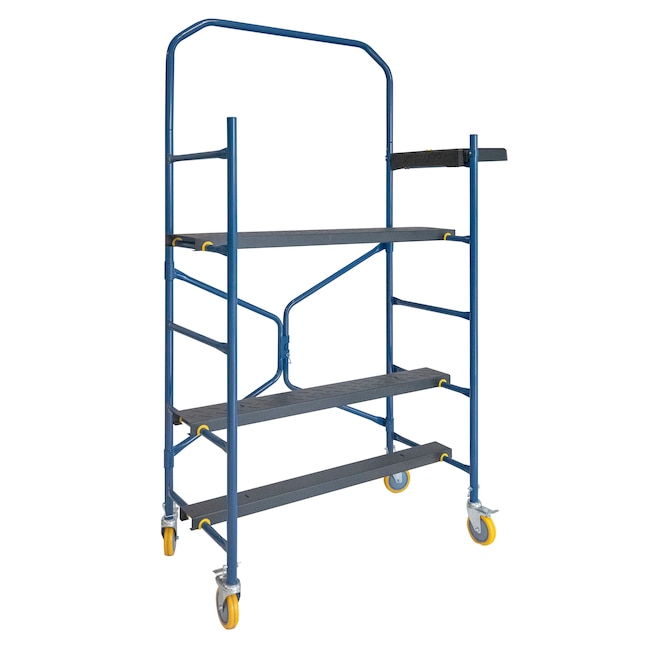Scaffolding Guildford: The Best Option for Your Building and Renovation Projects
Scaffolding Guildford: The Best Option for Your Building and Renovation Projects
Blog Article
Exploring the Various Kinds Of Scaffolding Utilized in Construction Jobs
The building sector counts heavily on numerous kinds of scaffolding to satisfy particular task demands, each offering distinct benefits and applications. Conventional structure scaffolding provides a tough foundation for basic jobs, while put on hold scaffolding is crucial for job on high-rise frameworks.

Typical Structure Scaffolding
Typical structure scaffolding is among the most commonly used techniques in the building market because of its robustness and flexibility. This system contains straight and upright frameworks that are set up to develop a secure system for workers and materials. The primary components consist of upright blog posts, straight ledgers, and angled dental braces, which with each other offer a solid structure that can support considerable loads.
One of the crucial advantages of standard structure scaffolding is its versatility to various building projects, varying from domestic structures to big industrial frameworks. The modular design permits very easy assembly and disassembly, making it reliable for both short-term and long-lasting jobs. Additionally, the system can be personalized in elevation and width, fitting various building styles and website conditions.
Security is paramount in scaffolding applications, and typical frame systems are outfitted with guardrails and toe boards to stop drops and ensure worker defense. Routine evaluations and adherence to safety and security laws are important in keeping the stability of the scaffold (Scaffolding). In general, standard structure scaffolding continues to be an essential choice in the building market, supplying a trustworthy platform for labor and enhancing overall project effectiveness

Suspended Scaffolding
Put on hold scaffolding supplies an one-of-a-kind solution for construction tasks that call for access to elevated surfaces, specifically in scenarios where typical structure scaffolding might be unwise. This sort of scaffolding is commonly put on hold from the roofing or upper degrees of a structure, making use of a system of systems, ropes, and pulley-blocks to produce a functioning room that can be changed to numerous heights.
Among the key benefits of put on hold scaffolding is its versatility. It can be conveniently repositioned or lowered to accommodate modifications in building needs, making it ideal for tasks such as window installation, frontage work, and upkeep on skyscrapers. Furthermore, the marginal impact of suspended scaffolding allows for much better usage of ground space in urban settings, where space is often minimal.
Safety is a crucial factor to consider in making use of suspended scaffolding. Proper rigging and anchoring systems need to be used to make certain stability and protect against accidents. Operators should additionally be educated in the secure use this equipment. Generally, put on hold scaffolding gives a efficient and effective remedy for accessing hard-to-reach locations in numerous building circumstances, enhancing both efficiency and security on website.
System Scaffolding
System scaffolding, frequently considered as a contemporary option in the scaffolding market, consists of pre-engineered components that can be swiftly constructed and adjusted for different building jobs. Scaffolding. This kind of scaffolding is defined by its modular design, which enables versatility and efficiency on task sites, accommodating structural requirements and various elevations
Commonly made from high-strength steel or light weight aluminum, system scaffolding supplies boosted longevity and security. The components include upright messages, horizontal journals, and diagonal braces, which adjoin safely, guaranteeing a robust framework. The layout typically incorporates standard installations, simplifying setting up and disassembly processes, therefore lowering labor time and expenses.

Rolling Scaffolding
Rolling scaffolding is a versatile alternative to conventional set scaffolding, developed for movement and simplicity of use on building websites. This sort of scaffolding contains a platform supported by frameworks with wheels, allowing workers to conveniently transfer it as required. The flexibility attribute dramatically boosts efficiency, as it lessens downtime linked with putting together and taking apart dealt with scaffolding.
Typically created from lightweight materials such as aluminum or steel, rolling scaffolding supplies a strong yet portable option for projects calling for regular repositioning - Scaffolding. It is especially beneficial in tasks such as paint, drywall setup, and electric job, where accessibility to various elevations and places is needed
Security is paramount in rolling scaffolding design, with functions such as securing wheels to avoid unplanned motion when being used, and guardrails to safeguard workers from drops. Additionally, lots of models are flexible in elevation, accommodating numerous task requirements.
Cantilever Scaffolding

The style of cantilever scaffolding typically involves making use of arms or braces anchored to a structure or framework, making it possible for the system to prolong external safely. Safety is critical; thus, these scaffolds have to be engineered to endure environmental conditions and various lots. Normal assessment and maintenance are vital to make sure architectural stability and worker safety.
Cantilever scaffolding is preferred for its convenience and efficient use space, making it a preferred option in urban atmospheres where space restraints prevail. Furthermore, it facilitates much easier accessibility to high elevations, eventually adding to the overall efficiency of construction jobs. Similar to all scaffolding types, proper training and adherence to security criteria are vital for employees utilizing cantilever scaffolding.
Verdict
Standard structure scaffolding gives stability, while suspended scaffolding uses convenience for raised tasks. System scaffolding more tips here assists in fast setting up, and rolling scaffolding enhances wheelchair for varying work environments.
Conventional frame scaffolding offers company website a tough structure for basic jobs, while put on hold scaffolding is vital for work on high-rise structures.Moving scaffolding is a versatile option to conventional fixed scaffolding, designed for mobility and convenience of use on building and construction websites. As with all scaffolding kinds, appropriate training and adherence to safety criteria are crucial for workers using cantilever scaffolding.
Traditional structure scaffolding supplies stability, while suspended scaffolding uses versatility for raised tasks. System scaffolding facilitates quick setting up, and rolling scaffolding improves mobility for differing work settings.
Report this page